Feeling the sting of a high utility bill or the chill of a drafty room? You're not alone. The best energy efficient home upgrades deliver a powerful one-two punch: they make your home dramatically more comfortable while putting real, measurable savings back in your pocket every month.
Why Energy Efficiency is a Smart Investment
Upgrading your home for energy efficiency isn't just about following a trend—it's one of the smartest financial moves a homeowner can make. Think of it less as an expense and more as an investment in your property, your comfort, and your long-term financial health. The most obvious win is seeing your utility bills drop as your home needs less power to stay warm in the winter and cool in the summer.
But the benefits don't stop at your bank account. A series of smart upgrades can completely change how your home feels, getting rid of those annoying hot and cold spots for good. The best part? You don't have to do it all at once. It's about taking a strategic approach:
- Find the biggest energy hogs first. This way, your initial time and money go where they’ll make the most difference.
- Prioritize upgrades by return on investment (ROI). You can start with simple, high-impact fixes before tackling bigger projects.
- Build a more sustainable home. Using less energy naturally shrinks your carbon footprint.
A Clear Path to Home Efficiency
Starting this journey is all about having a solid, common-sense plan. This visual lays out the three essential stages for getting it right.
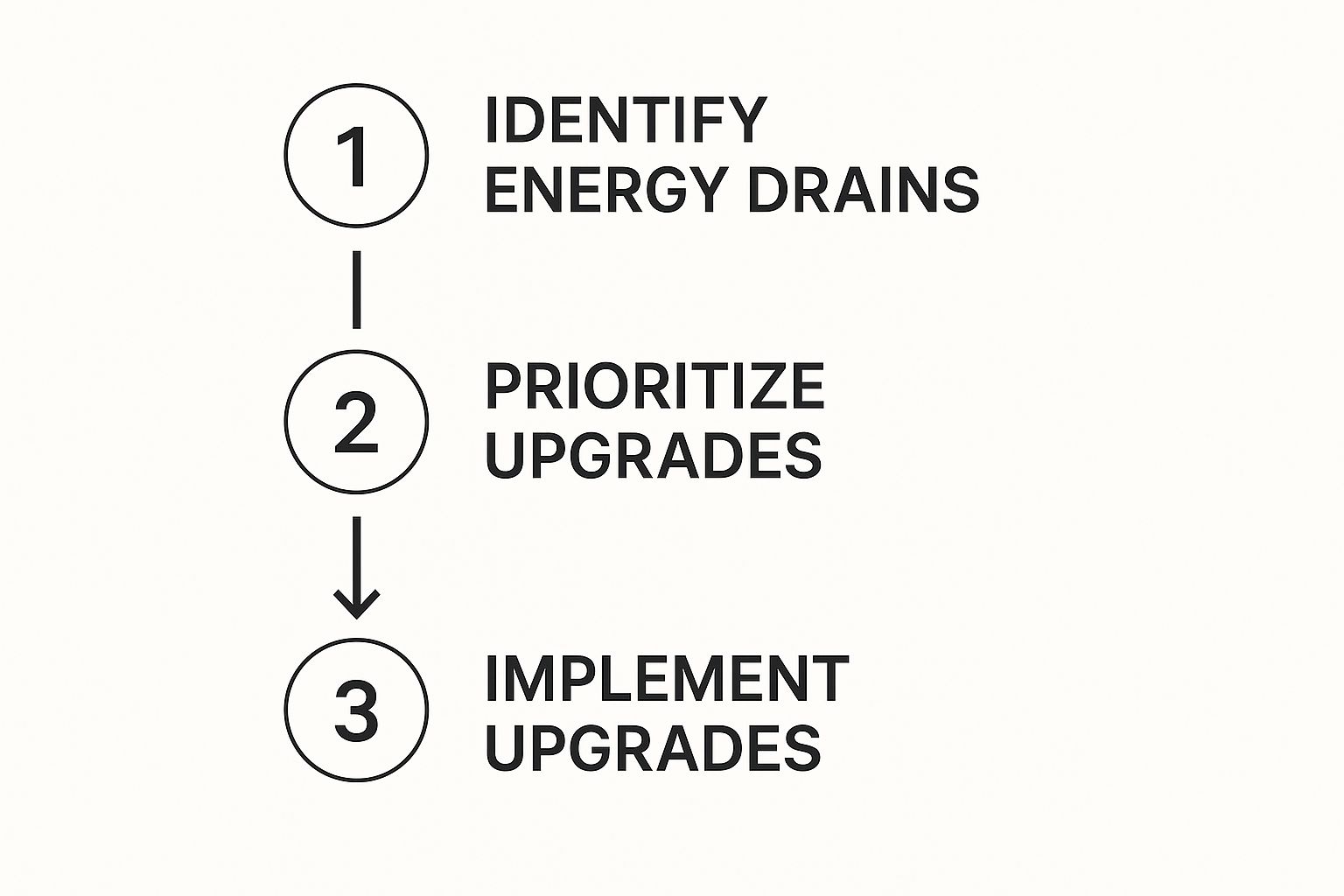
The biggest takeaway here is that successful energy efficient home upgrades start with a proper diagnosis, not just guesswork. Once you understand exactly where your home is losing energy, you can make informed choices that truly pay off.
High-Impact Upgrades at a Glance
To give you a clearer picture of what's possible, I've put together a quick summary of some of the most effective upgrades. This table shows what you might expect to spend and, more importantly, what you could save.
| Upgrade Category | Typical Cost | Potential Annual Savings |
|---|---|---|
| Attic Insulation | $1,500 – $3,500 | $200 – $600 |
| Air Sealing | $350 – $1,500 | $100 – $400 |
| High-Efficiency Windows | $8,000 – $24,000 | $125 – $450 |
| Energy Star Appliances | $500 – $2,000+ per unit | $40 – $100+ per unit |
| Smart Thermostat | $150 – $300 | Up to $150 |
| High-Efficiency HVAC | $7,000 – $15,000 | $200 – $550 |
As you can see, the options range from affordable DIY projects to major investments, but they all share the common goal of reducing your energy consumption and saving you money year after year.
Beyond the Quick Fixes
This guide is designed to move past the generic advice and give you a real roadmap. We’ll cover how everything from small tweaks to major renovations contributes to a home that’s more valuable and just plain nicer to live in.
Did you know the average U.S. home has enough air leakage to equal leaving a window wide open, 24/7, all year long? Tackling those hidden gaps is often the single most cost-effective first step you can take.
In the end, these upgrades also boost your property's value. A home with documented energy improvements and lower running costs is a huge selling point for future buyers, making this a sound financial decision from every angle. I’ll help you cut through the noise and focus on what really works.
Finding Your Home's Hidden Energy Weak Spots
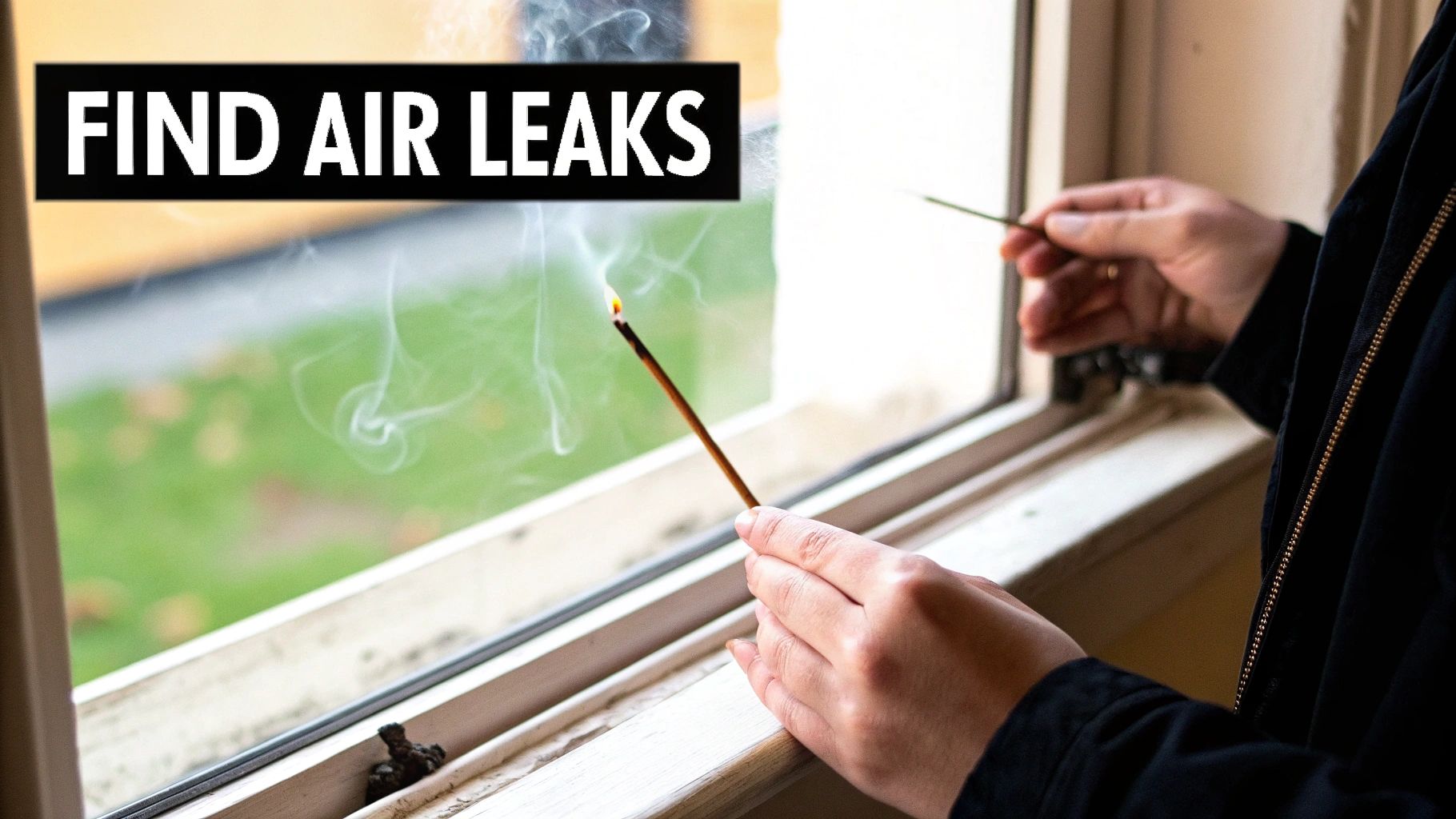
Before you start pricing out new windows or a high-tech thermostat, you need to play detective. Your home is constantly losing conditioned air—and your money—through countless tiny gaps and weak points you probably don't even know exist.
Pinpointing these problem areas is the most critical first step. It ensures your investments target the biggest energy wasters, giving you the most bang for your buck.
The good news? You don't need a truck full of expensive equipment to get started. A simple do-it-yourself assessment can reveal a surprising amount about where your home is falling short. This initial investigation will help you build a priority list based on real evidence, not just guesswork.
The Low-Tech Hunt for Air Leaks
One of the biggest energy vampires in any home is air leakage. We're talking about all the small cracks and openings in your home's "envelope" that let your expensive heated or cooled air escape. This forces your HVAC system to work overtime, day in and day out.
A surprisingly effective way to find these leaks is with a humble stick of incense.
On a cool, slightly windy day, shut all your windows and doors, and turn off your furnace or air conditioner. Then, just light the incense and carefully hold it near common culprits:
- Window and Door Frames: Watch the smoke. If it blows sideways or gets sucked out, you've found a draft.
- Electrical Outlets and Switches: These are basically unsealed holes in your drywall.
- Recessed Lighting: Especially in older homes, these can be major highways for air to escape into the attic.
- Plumbing Penetrations: Check where pipes come through the wall under sinks and behind toilets.
This simple test makes an invisible problem completely tangible. Every little flicker of smoke is a spot where you're actively losing money. Sealing these gaps is one of the quickest and most affordable energy efficient home upgrades you can make.
A bit of time spent air sealing and topping up your insulation can save you up to 10% on your annual energy bills. For many homeowners, that’s hundreds of dollars back in their pocket each year from a pretty straightforward project.
Inspecting Your Insulation and Ductwork
Once you've tackled the obvious leaks, your next targets are the two heavy hitters in your home's thermal performance: the attic and your duct system. Because they're out of sight, they're often out of mind—and that's a costly oversight.
Start by popping your head into the attic for a quick visual inspection. Can you see the tops of the ceiling joists? If so, you almost certainly need more insulation. Over the years, insulation settles, gets compressed, or gets damaged, which tanks its effectiveness. Keep an eye out for areas that look thin, patchy, or discolored.
Next, turn your attention to your ductwork, if you can get to it in a basement, crawlspace, or attic. Leaky ducts are a massive energy drain. In a typical house, a staggering 20% to 30% of the air moving through the ducts is lost to leaks, holes, and bad connections. Look for disconnected segments, obvious gaps, or just use your hand to feel for air blowing out of the joints when the system is running.
If you want a more structured approach, a detailed guide can make a world of difference. You can follow a comprehensive home energy audit checklist to walk you through each area of your house so you don't miss a thing.
When to Call in the Professionals
While a DIY audit is a fantastic starting point, a professional energy assessment gives you a much deeper, more scientific analysis. Certified energy auditors use specialized tools that don't just find leaks—they quantify them with precision.
They’ll typically perform two key tests:
- Blower Door Test: They mount a powerful fan in an exterior doorway to depressurize your home. This test essentially pulls air in through every single crack and crevice, exaggerating the leaks so they're easy to find and measure. The final result is a hard number that rates your home's overall air tightness.
- Infrared Thermography: An auditor uses an infrared camera to scan your walls and ceilings. This gadget creates a visual map of temperature differences, instantly showing you exactly where insulation is missing or where cold air is sneaking into your home. It’s like giving your house an x-ray.
Hiring a pro provides a detailed, data-backed report that prioritizes energy efficient home upgrades based on their actual return on investment. This expert guidance takes the guesswork out of the equation, ensuring that when you do spend money on a major project, you're fixing the most critical issues first.
Choosing Upgrades with the Best ROI
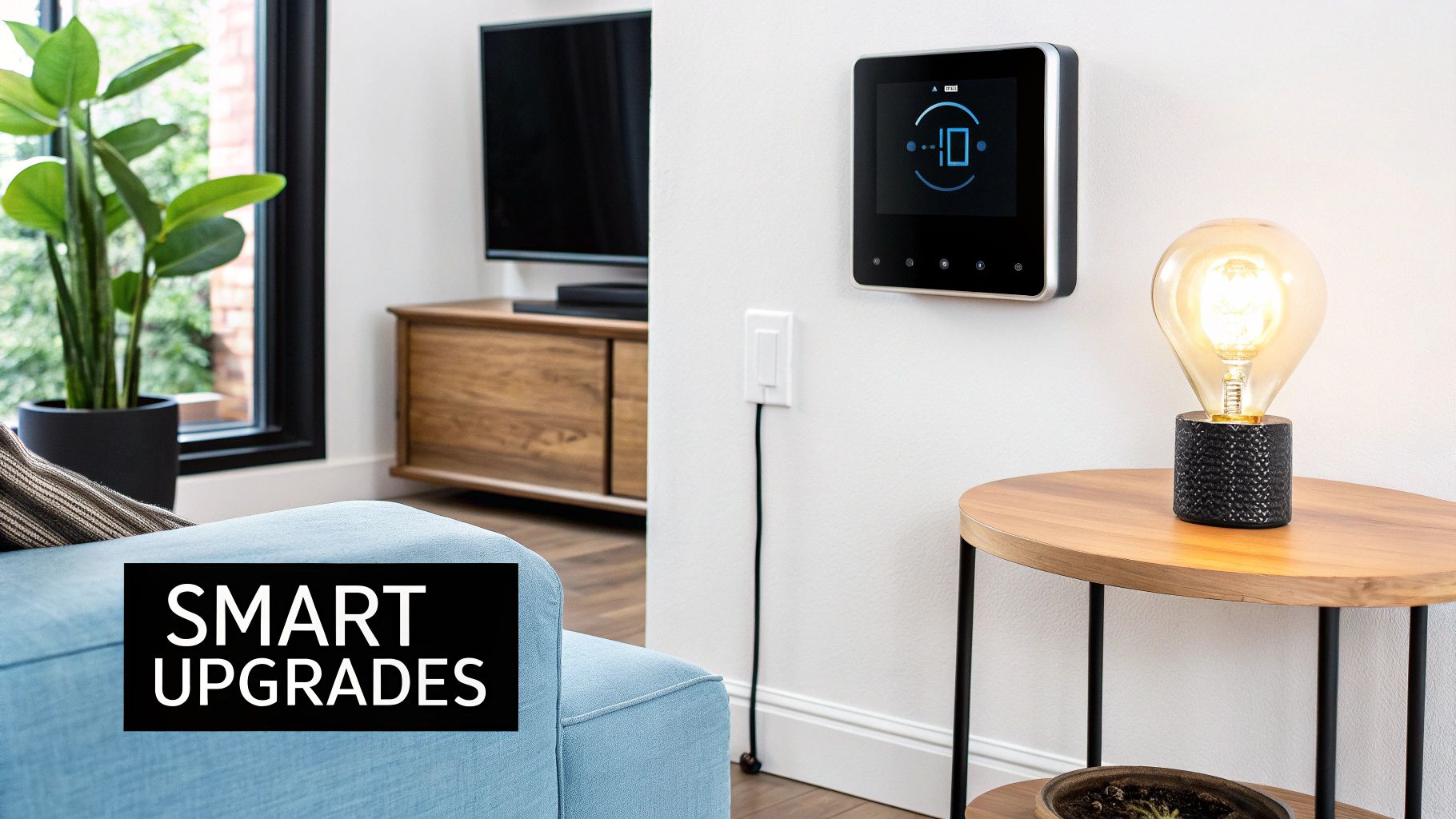
Now that you’ve pinpointed your home's energy weak spots, it's time for the fun part: picking the solutions that give you the biggest bang for your buck. Let's be honest, not all energy efficient home upgrades are created equal. Some offer a quick, affordable path to immediate savings, while others are long-term investments that will pay dividends for decades.
Thinking in terms of return on investment (ROI) is the smartest way to match your budget with your energy-saving goals. It's all about prioritizing the projects that will cut your utility bills the fastest and most significantly. This ensures every dollar you spend is pulling its weight.
To make this easier, I like to break the options down into two categories.
Quick Wins for Immediate Impact
Think of these as the low-hanging fruit. They’re relatively inexpensive, often DIY-friendly, and start saving you money almost immediately. This is the perfect place to start your journey.
One of the most powerful quick wins is also one of the simplest: installing a smart thermostat. These brilliant little devices learn your household's patterns and automatically adjust the temperature when you're away or asleep. You stop wasting energy without even thinking about it. This one small change can have a surprisingly big impact, especially since heating and cooling costs are usually the largest slice of any utility bill.
For example, smart thermostats certified by ENERGY STAR® are a great example of technology making energy efficiency easy. Studies show these devices can cut household energy bills by about 8% on average just by optimizing heating and cooling schedules. If you want to dive deeper into how they work, you can learn more about smart thermostat savings in our detailed guide.
Another no-brainer is upgrading your lighting. If you're still using old incandescent bulbs, you're essentially paying to run tiny, inefficient heaters. Making the switch to LED lighting is a simple change with profound results.
- Longevity: LEDs last up to 25 times longer than traditional bulbs, which means far less time on a ladder and less money on replacements.
- Efficiency: They use at least 75% less energy. You'll see that difference on your bill every single month.
- Versatility: With a huge range of colors and brightness levels available, you can perfect the ambiance in every single room.
It’s as easy as changing a lightbulb, but the savings really add up over time. It’s a classic case of a small effort yielding big results.
Long-Term Investments for Lasting Value
While quick wins are fantastic, the real game-changers are the foundational upgrades. These projects provide the deep, structural efficiency that transforms your home's performance for the long haul. They require a bigger upfront investment, but they deliver significant, sustained savings and dramatically improve your home's comfort and value.
The undisputed champions in this category are air sealing and insulation. You really have to think of them as a team. Air sealing is the process of hunting down and plugging all those hidden gaps and cracks in your home's envelope—the very leaks you might have found with your incense stick test. This stops cold drafts in the winter and keeps cool air from escaping in the summer.
Once your home is sealed tight, it's ready for proper insulation.
It's a staggering fact, but 9 out of 10 homes in the U.S. are under-insulated. That means most of us are literally paying to heat and cool the outdoors. Properly insulating an attic is often called the single most effective energy upgrade you can make.
Together, these two upgrades create a powerful thermal barrier. This shield keeps the conditioned air you’ve paid for inside, which means your HVAC system doesn't have to work nearly as hard. The payoff is a much more comfortable home with fewer drafts and stable temperatures, plus savings of up to 15-20% on your heating and cooling costs.
Another major investment to consider is a modern, high-efficiency HVAC system, especially a heat pump. Older furnaces and air conditioners can be energy hogs. A new ENERGY STAR rated system can slash your heating and cooling costs by 20% or more. Heat pumps are fantastic because they handle both heating and cooling in one super-efficient unit, making them a great choice for many climates.
Finally, swapping out old, single-pane windows for modern, energy-efficient models can stop a massive amount of energy loss. Windows can be responsible for 25-30% of a home's heating and cooling energy use. New windows with features like double or triple panes, low-E coatings, and insulated frames make a world of difference. You could see your bills drop by $125 to $450 per year, and while it's a significant expense, it’s an upgrade that also boosts curb appeal and property value.
How to Find and Use Rebates and Incentives

The upfront cost of major energy efficient home upgrades can feel daunting. I get it. But here’s a secret that smart homeowners know: you rarely have to pay the full sticker price. There's a whole world of financial incentives out there designed specifically to make these projects more affordable. Think of it as a reward for making your home a little greener.
These programs pop up at all levels—federal, state, and even from your local utility company. They might come as a direct cash rebate, a valuable tax credit that lowers what you owe the IRS, or a low-interest loan. Figuring out where to find them and how to use them is the key to unlocking some serious savings.
Starting Your Search for Savings
So, where do you even begin? The trick is to start broad and then zero in on what applies to your specific project and location. This approach saves you from getting lost in a maze of government websites and confusing paperwork.
I always recommend starting with these three resources:
- The ENERGY STAR Website: This site is an absolute goldmine. Their Rebate Finder tool lets you search for incentives just by plugging in your zip code. It covers everything from new appliances to a full HVAC overhaul.
- Your Local Utility Provider's Portal: Don't forget your electric and gas company! A quick look at their website often turns up deals on smart thermostats, insulation, or even a simple discount for getting your A/C tuned up.
- State Energy Office Websites: Every state has an agency focused on energy policy. These are the folks who usually manage the bigger state-funded rebate programs for projects like heat pumps or solar installations.
Checking these three places first will give you a solid list of potential savings. My advice? Never assume an upgrade is out of your budget until you've seen what incentives are on the table.
Stacking incentives is the ultimate power move. You can often combine a federal tax credit with a state rebate and a local utility discount for the same project. I've seen homeowners slash the total cost of an upgrade by 50% or more by doing this.
Navigating the Application Process
Once you've found a few programs that look promising, it's time to get organized. Each incentive has its own set of rules, deadlines, and paperwork. This is where being meticulous really pays off.
Before you buy a single thing, double-check the eligibility requirements. Many rebates are only for specific makes and models that meet a certain efficiency rating. You need to make sure the product you want is on their approved list. From there, keep everything—receipts, product model numbers, contractor invoices—in a dedicated folder. Trust me, you'll thank yourself later.
The global push for efficiency is creating huge opportunities. Just look at China's massive 2025 appliance trade-in program, backed by roughly $41.7 billion USD. This single initiative is expected to save households up to $943 million USD in electricity bills in its first year. It's a powerful example of how seriously governments are taking this, and you can discover more insights on this program at Ember-Energy.org.
The same logic applies to tax credits, like those for solar panels. These credits directly reduce your tax bill, but you have to file the right forms with your annual tax return. For a big project, it’s often worth talking to a tax professional to make sure you get it right. If you're thinking about going solar, our complete solar panel installation guide is a great resource for navigating these larger investments.
Getting to Grips with Building Codes and Efficiency Standards
Have you ever walked into a brand-new house and noticed how it just feels different? It’s quieter, more comfortable, and seems to hold its temperature better than a home built just a couple of decades ago. That’s not an accident. Much of that difference is thanks to the invisible rules of construction: building codes and appliance efficiency standards.
These regulations are the unsung heroes of energy conservation. They set the minimum performance bar for everything from the insulation packed into your walls to the new dishwasher you’re eyeing. Think of them as the basic recipe for an efficient home, locking in long-term savings and comfort from the moment the foundation is poured.
What Building Energy Codes Actually Do
At their core, building energy codes are legally enforceable standards that establish the baseline for a home's energy performance. They aren't just gentle suggestions; they're the rules contractors have to play by. These codes focus on the most critical parts of your home's thermal envelope and the systems that keep it comfortable.
So, what do they cover? It usually comes down to a few key areas:
- Insulation Levels: They specify the minimum R-values (a measure of thermal resistance) for your attic, walls, and floors, with requirements changing based on your specific climate zone.
- Air Sealing: Modern codes demand that builders meticulously seal the gaps and cracks in a home's shell. This is a huge deal for preventing drafts and stopping expensive conditioned air from leaking out.
- Window Performance: You'll see requirements for window U-factors (how well they insulate) and Solar Heat Gain Coefficients (how much solar heat they block).
- Duct Sealing: Leaky ducts are a massive energy drain. Codes now mandate that HVAC ductwork is properly sealed so your furnace and AC aren't just heating and cooling your attic.
Because building science is always improving, these codes get updated every few years. That’s why a home built today is fundamentally more efficient—and cheaper to run—than one built to older standards. It was simply designed to waste less energy from the get-go.
The tricky part is that not everyone is on the same page. While codes have improved across the United States, their adoption is far from uniform. The 2025 State Energy Efficiency Scorecard reveals a patchwork system: only six states have adopted the latest model code, and a surprising nine states have no statewide building energy code at all. It’s worth checking out the scorecard to see where your state stands.
How to Read Appliance and Product Labels
Beyond the structure of your house, the efficiency of the things you put inside it makes a huge difference. This is where learning to read product labels, especially the ENERGY STAR label, becomes your superpower for finding energy efficient home upgrades.
That little blue ENERGY STAR logo is your shortcut to savings. It means the product meets or exceeds strict energy performance standards set by the U.S. Environmental Protection Agency (EPA). It’s a simple, reliable way to spot products that will save you money for years to come.
Take a certified clothes washer, for example. It’s not just a new machine. It’s a machine engineered to use about 20% less energy and 30% less water than a standard model. That might not sound like much, but those savings really add up over the appliance's 10-year lifespan.
When you're shopping, keep an eye out for these two key labels:
- ENERGY STAR: This is the gold standard, the most recognized symbol for top-tier energy efficiency. You'll find it on everything from appliances and electronics to windows and light bulbs.
- EnergyGuide Label: This is the yellow tag you see on most major appliances. It doesn't mean the product is efficient, but it gives you an estimated annual energy consumption and operating cost. It’s a fantastic tool for making a side-by-side comparison between two different models.
Once you know what these standards mean, you're in the driver's seat. You can confidently pick products that not only work great but are also designed to start lowering your utility bills from the moment you turn them on.
Common Questions About Home Energy Upgrades
Jumping into a home efficiency project always kicks up a lot of questions. It's smart to want clear, real-world answers before you start spending your time and money. I've heard just about every question in the book, so let's walk through some of the most common ones to get you started on the right foot.
What’s the Single Best Upgrade to Make?
If I had to pick just one, it’s almost always improving your home’s "envelope." That’s just a practical way of saying you need to focus on air sealing and insulation, especially in the attic.
Think of it like this: your furnace and air conditioner work their tails off to make your home comfortable. But if your house is full of tiny leaks and has a poorly insulated attic, all that expensive heated or cooled air just escapes. It's like trying to fill a leaky bucket.
Before you can efficiently control the temperature inside, you have to stop the outside weather from getting in. A properly sealed and insulated attic is a game-changer. It acts as a thermal cap on your house, keeping you warmer in the winter and cooler in the summer. Honestly, this one project gives you the biggest bang for your buck and makes every other upgrade you do far more effective.
How Much Will I Actually Save?
This is the million-dollar question, and the honest answer is: it depends. Your savings hinge on everything from your home's current shape and local climate to what your utility company charges. But with a smart, layered approach, the savings can be massive. It’s not about finding one silver bullet; it's about making a series of smart choices.
Let's talk realistic numbers based on what I’ve seen over the years:
- Air Sealing & Insulation: Tackling these two together can easily slash your heating and cooling costs by 15-20%. That's a huge chunk right off the bat.
- High-Efficiency HVAC: If you swap out an old, clunky furnace or AC for a modern system, you could save another 20% on top of that.
- ENERGY STAR Appliances: As your old appliances die, replacing them with ENERGY STAR models can chip away another 5-10% of your total energy use over time.
When you add it all up, homeowners who do several of these key upgrades often see their total energy bills drop by 30% or more. The trick is to go after the biggest energy hogs first. That’s how you maximize your savings from day one.
I see this all the time: people drop a ton of money on a powerful new HVAC system without fixing their insulation and air leaks first. That’s like buying a race car engine for a car riddled with bullet holes. You've got all the power, but most of it is going to waste. Always fix the shell of the house first.
Are Big-Ticket Upgrades Like Windows or Solar Worth It?
Major projects like new windows or solar panels are a different beast. They have longer payback periods, so you really have to weigh the costs. But their value goes way beyond just the energy bill—they're a true investment in your property and your daily life.
New, high-performance windows do more than just save energy. They kill drafts, cut down on street noise, and stop the sun from fading your furniture. You can expect to save 10-25% on your yearly heating and cooling costs, and they’re a huge plus when it comes time to sell your home.
Solar panels used to be a much tougher sell, but the finances have completely changed. With federal tax credits and equipment prices dropping, the payback period in many places is down to 8-12 years. After that, you're literally making your own free electricity for the life of the panels, which can be 25 years or more. For both windows and solar, though, my advice is the same: get your insulation and air sealing sorted out first to make sure these big investments perform at their peak.
Can I Do Any of This Myself?
Absolutely! Some of the most effective energy efficient home upgrades are perfect for a weekend DIY project. Rolling up your sleeves is a great way to cut out labor costs and see an immediate return.
Here are a few projects that are perfect for DIYers:
- Caulking and Weatherstripping: Sealing up gaps around windows and doors is cheap, easy, and you’ll feel the difference right away.
- Installing a Smart Thermostat: This is usually a quick, 30-minute job with just a few wires. The instructions are almost always foolproof.
- Switching to LED Lighting: It's as simple as changing a lightbulb, but the cumulative savings on your electric bill are significant.
- Insulating Your Water Heater and Pipes: You can buy a pre-cut insulation blanket for your water heater for next to nothing. It's a simple way to stop it from losing heat while it's just sitting there.
That said, you also have to know when to call in a pro. Anything involving your home’s main electrical system, like installing a new HVAC unit or wiring up solar panels, is a job for a licensed professional. It ensures the work is safe, up to code, and done right the first time—protecting you and your home.
Ready to turn your house into a smarter, more efficient home? At Automated Home Guide, we've got the expert insights and no-nonsense guides you need. Explore our resources and start your journey toward a more comfortable and affordable home today.
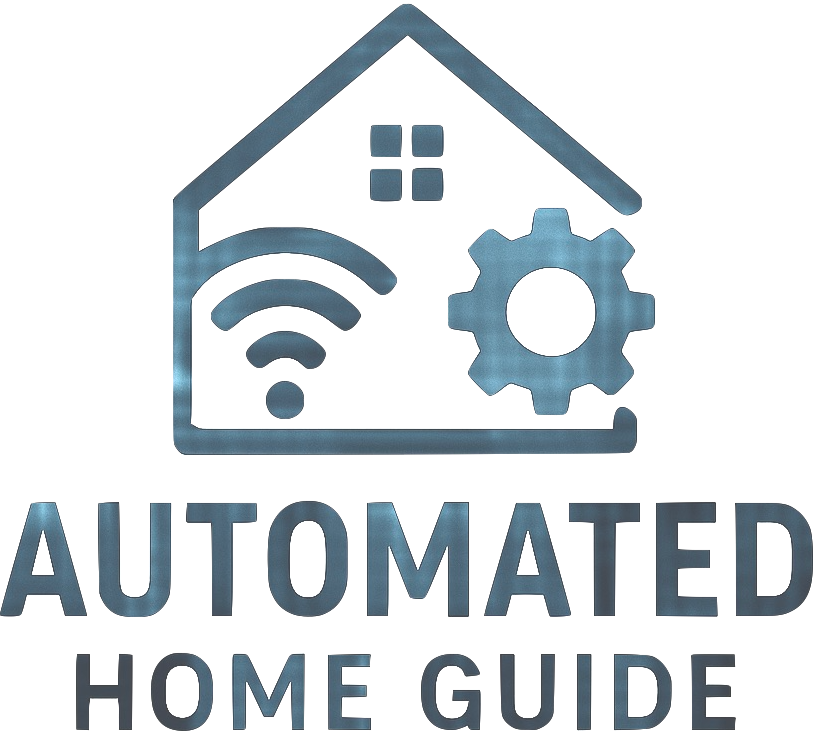
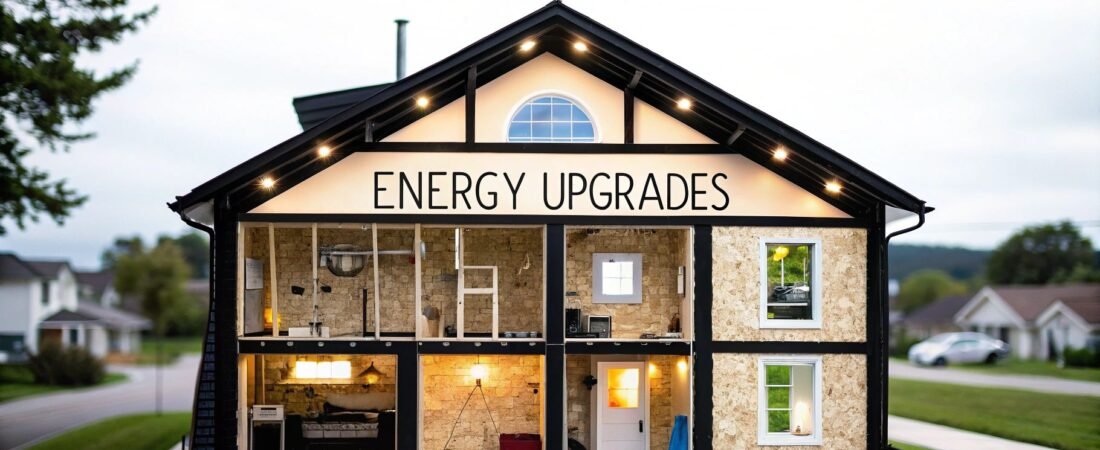



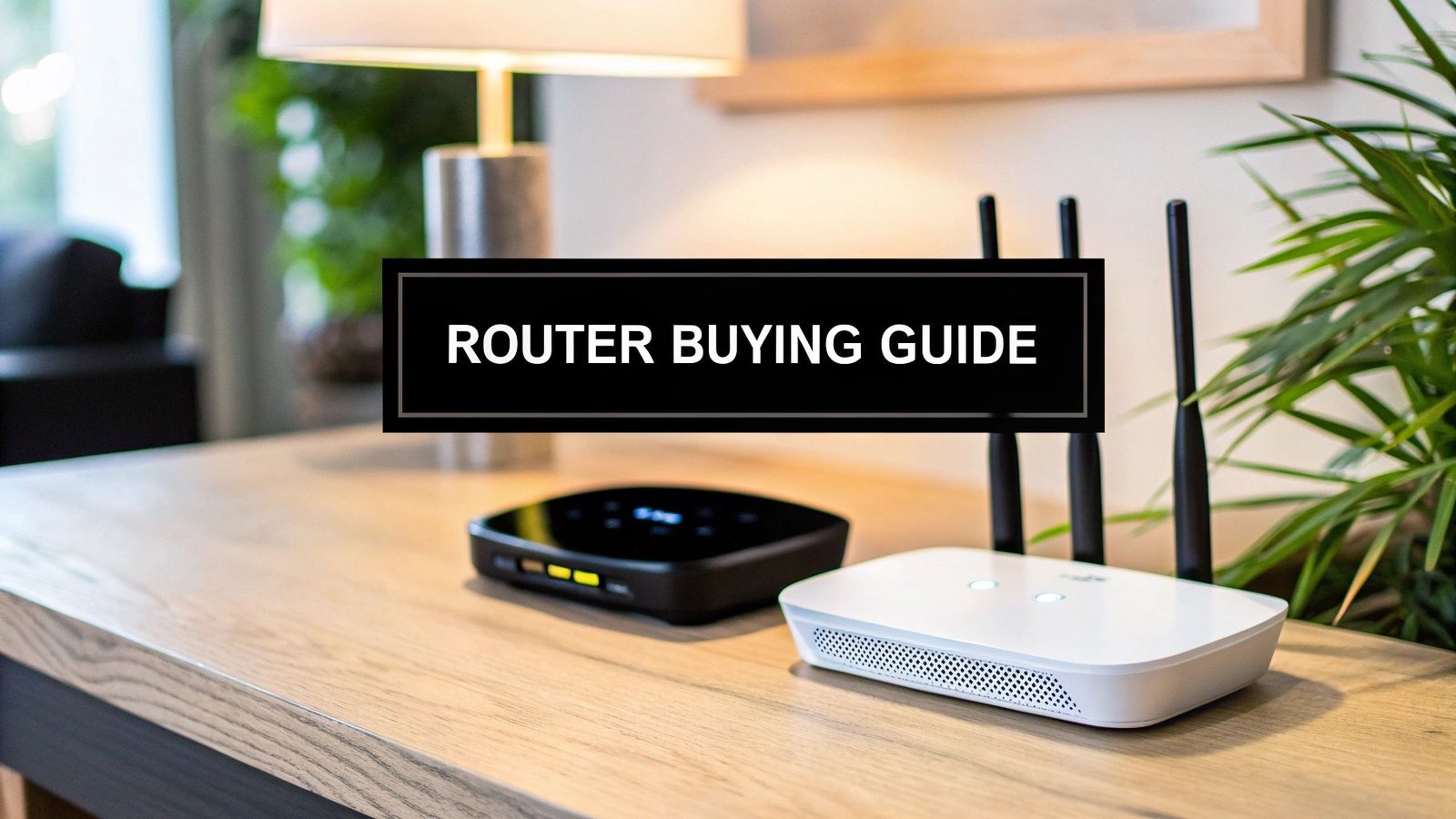


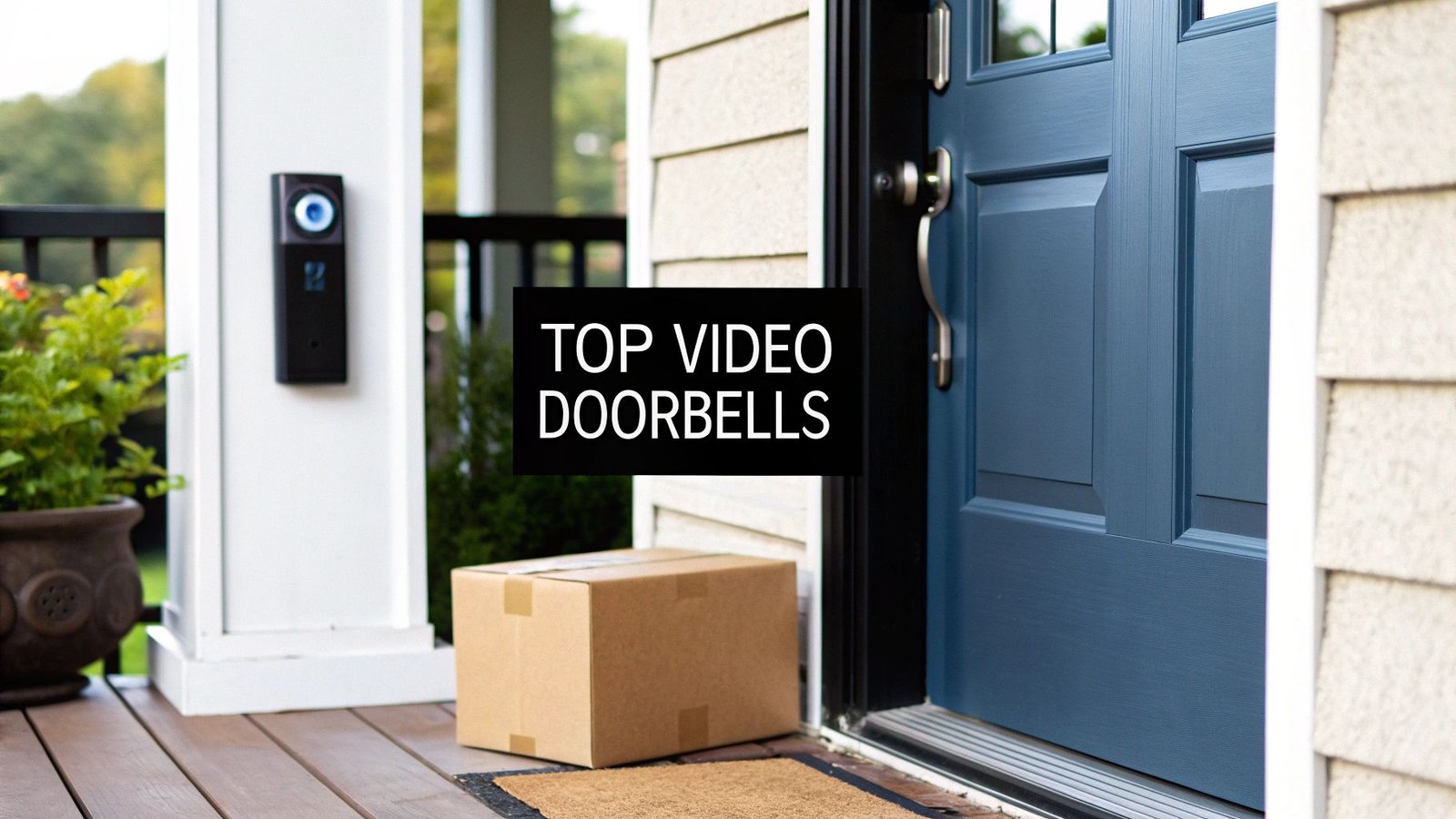
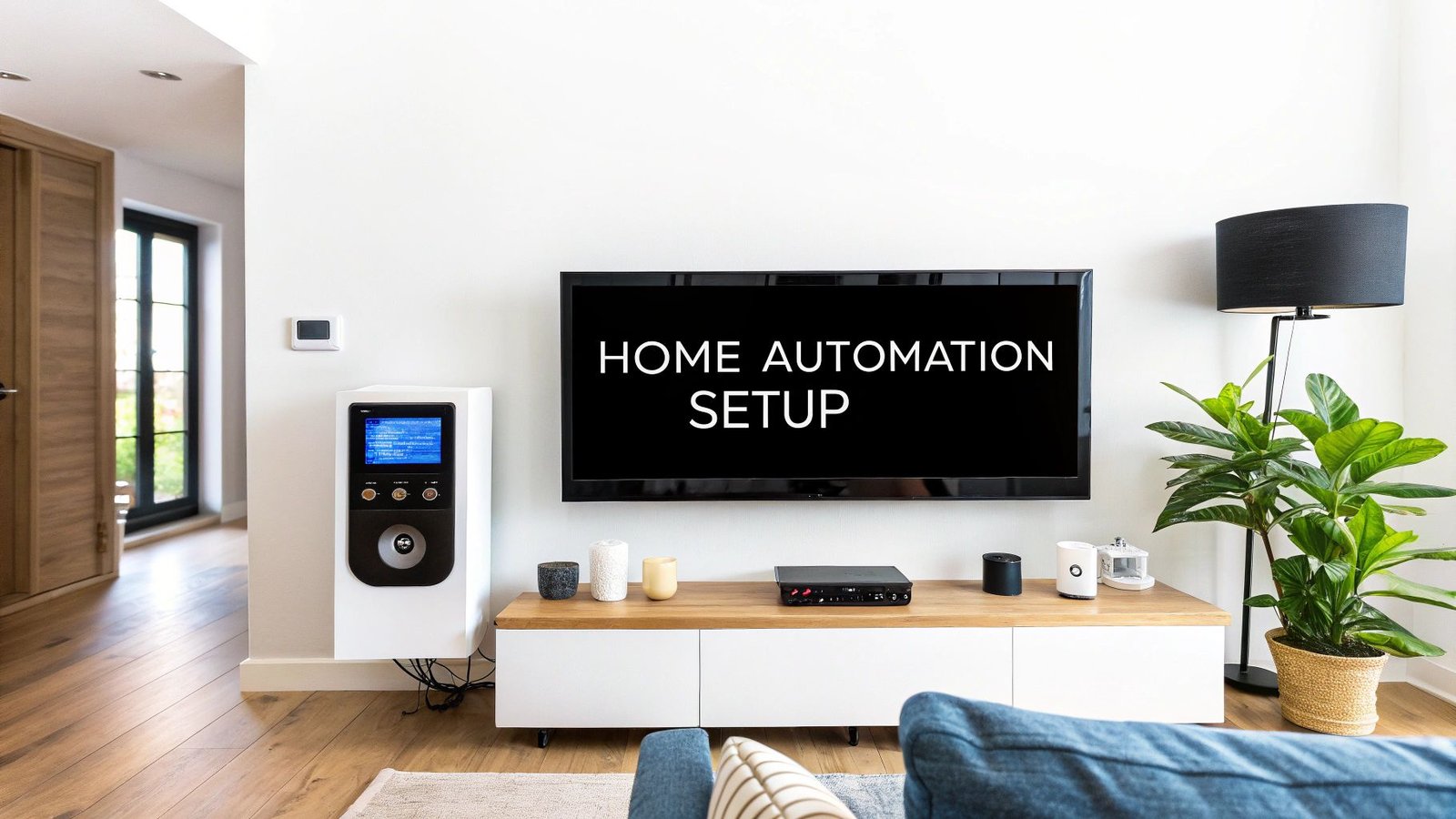
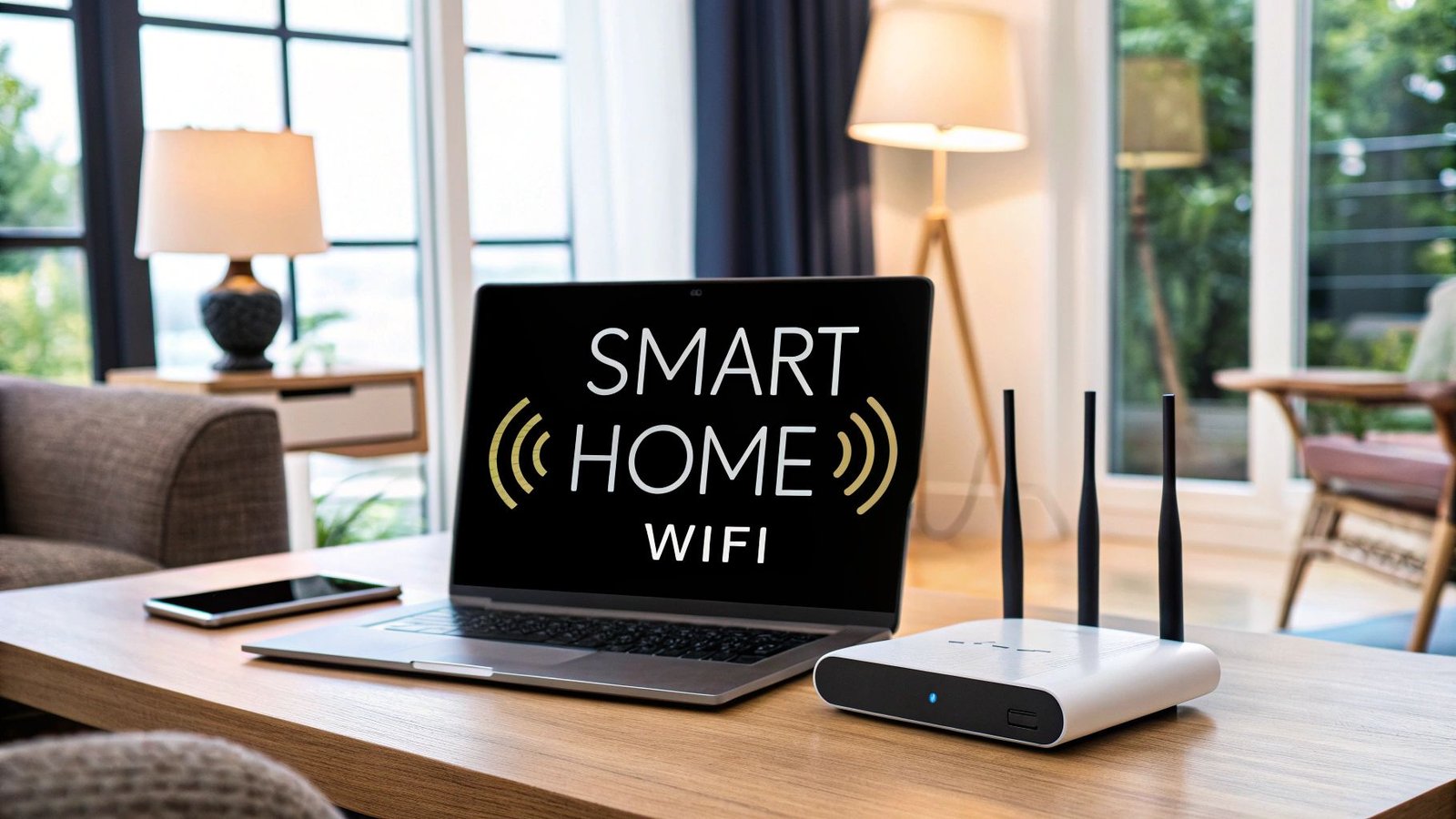
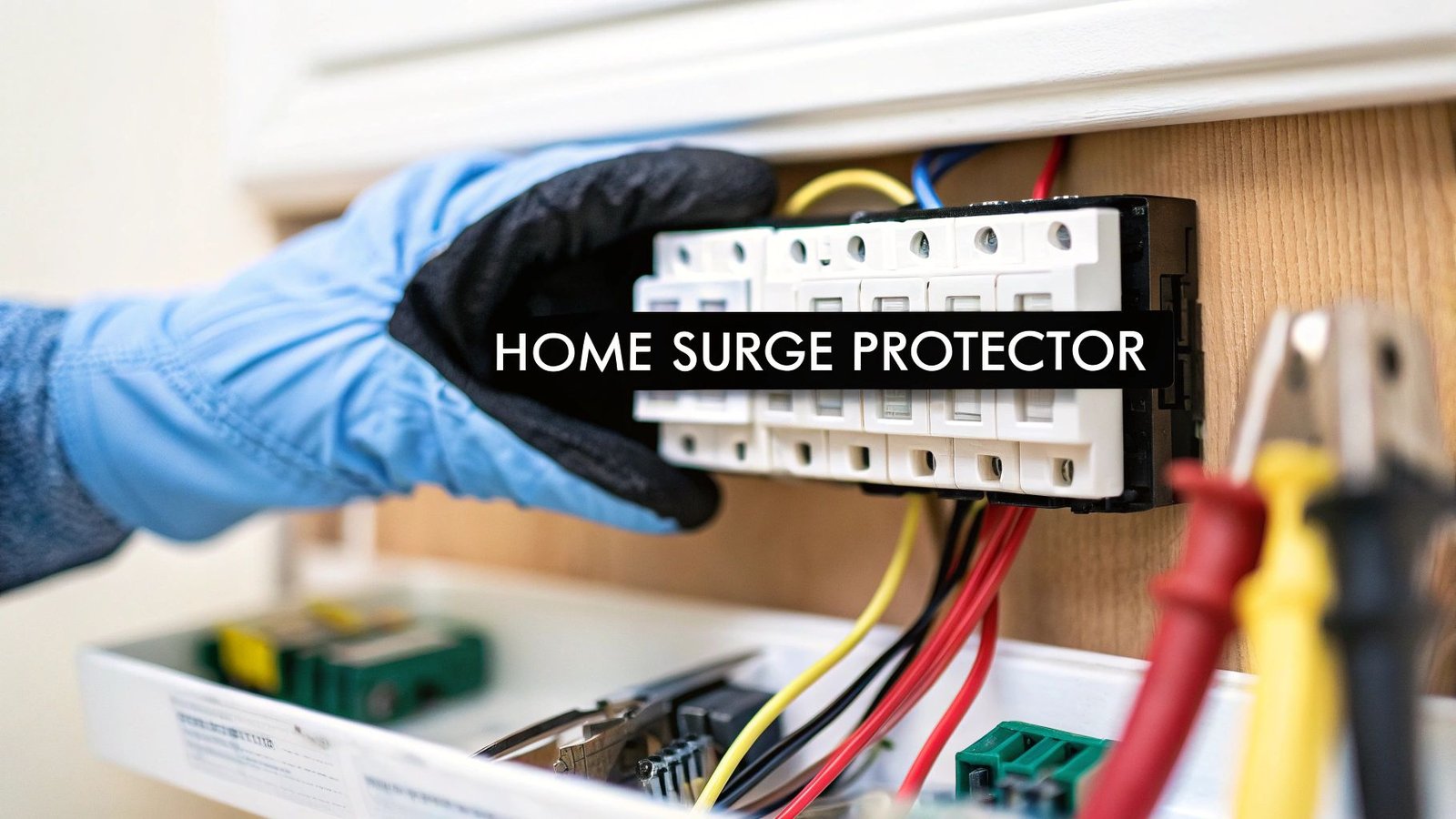
Leave a Reply